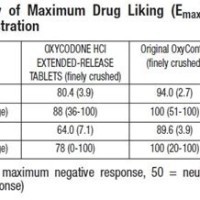
Contents
- 1 Dilaudid vs. Fentanyl
Dilaudid vs. Fentanyl
Dilaudid (hydromorphone hydrochloride) is an opioid narcotic pain reliever similar to oxycodone, morphine, methadone, fentanyl, and other opioids. Dilaudid, like opioids, stimulates brain receptors to increase the pain threshold and reduce pain perception.
Fentanyl is a strong, synthetic narcotic similar to morphine. A 0.1 mg dose of fentanyl is approximately equal to 10 mg of morphine administered by injection. Fentanyl stimulates brain receptors to increase the pain threshold and reduce pain perception. It comes in transdermal, transmucosal, and injectable forms.
Uses of Dilaudid vs. Fentanyl
Dilaudid uses
Dilaudid is used for managing acute and chronic pain when opioids are appropriate.
Fentanyl patch uses
The fentanyl transdermal system is used for severe chronic pain, such as cancer pain.
Side effects of Dilaudid vs. Fentanyl
Dilaudid (hydromorphone) HCI BLACK BOX WARNING
- Dilaudid-HP Injection should not be confused with other types of Dilaudid injections or opioids, as overdose and death could result.
- Avoid dosing errors from confusion between mg and mL when dispensing, prescribing, or administering the oral solution. Dosing errors can result in accidental overdose and death.
- Hydromorphone exposes patients to risks of addiction, abuse, and misuse, leading to overdose and death.
- Patients should be monitored closely because serious, life-threatening, or fatal respiratory depression may occur.
- Prolonged use of hydromorphone during pregnancy can result in neonatal opioid withdrawal syndrome, which may be life-threatening if not recognized and treated.
- Combining opioids with benzodiazepines, alcohol, or other CNS depressants may result in severe sedation, respiratory depression, coma, and death.
Dilaudid side effects
Common side effects include respiratory depression and trouble breathing.
Dilaudid carries a box warning of respiratory depression and abuse potential. Use with alcohol or other CNS-affecting medications can worsen respiratory depression and may cause death.
Fentanyl side effects
Fentanyl side effects include skin reactions at the application site. Serious side effects can include hallucinations, anxiety, depression, respiratory depression, overdose, cardiac arrest, fainting, low blood pressure, seizures, slow heart rate, paralytic ileus, abuse, and withdrawal symptoms.
Fentanyl can cause respiratory depression, muscle rigidity, and slow heart rate.
The FDA is investigating reports of deaths and serious side effects from the use of the fentanyl transdermal system, including overdoses.
Exposing the patch to heat can increase fentanyl release and may cause an overdose. Some patches may cause skin burns during an MRI scan.
Are Dilaudid and fentanyl addictive?
Physical dependence can occur during therapy with Dilaudid and fentanyl. Abruptly stopping these drugs can cause withdrawal symptoms, such as nausea, diarrhea, coughing, tearing, nasal discharge, excessive sweating, twitching muscles, and yawning.
Dosage of Dilaudid vs. Fentanyl
Dilaudid dosage administration
- Immediate-release tablets: Take 2 to 4 mg tablets by mouth every 4 to 6 hours as needed. Increase to 8 mg if necessary.
- Extended-release tablets: Start after discontinuing other opioid extended-release tablets. Individualize based on prior opioid therapy.
- Injections: Give 1 to 2 mg intramuscularly or subcutaneously every 2 to 3 hours as needed. Give 0.2 to 1 mg intravenously over 2 to 3 minutes every 2 to 3 hours as needed.
- Oral solution: Give 2.5 to 10 mg every 3 to 6 hours as needed.
- Rectal suppository: Insert one 3 mg suppository rectally every 6 to 8 hours OR 3 to 6 mg rectally every 3 to 4 hours, as appropriate.
Safe and effective use of hydromorphone in children has not been established.
Fentanyl transdermal patch dosage administration
- Patches should be applied to a flat, non-irritated area on the upper torso.
- The area of application should be clean and washed with water only prior to application.
- The patch should be firmly pressed against the skin for 10 to 20 seconds, especially around the edges.
- Patches should never be cut or damaged.
- Doses required to control pain vary widely among patients.
- The recommended dose is a 25 to 100 mcg/hour patch applied every 72 hours.
Fentanyl injection dosage administration
- Fentanyl injection can be given intramuscularly or intravenously.
- The usual dose for surgical premedication in adults is 0.05 mg to 0.1 mg per dose given by injection.
- For anesthesia, the dose is 0.5 to 20 mcg/kg per dose given intravenously. A maintenance intravenous infusion of 1-2 mcg/kg/hour may also be used.
- There are several recommended regimens for treating pain.
- Fentanyl is used for patient-controlled anesthesia (PCA).
- A fentanyl transdermal dose of 100 μg/hour is approximately equivalent to 360 mg/day of oral morphine, according to the manufacturer.
What Is Polycythemia Vera?
Drug interactions of Dilaudid vs. Fentanyl
Dilaudid drug interactions
Hydromorphone should be used cautiously with CNS depressants, including hypnotics, anesthetics, tranquilizers, phenothiazines, and alcohol. It should also be used with caution with mixed agonist/antagonist opioid analgesics, as they may reduce the analgesic effect of hydromorphone.
Fentanyl drug interactions
Using fentanyl with other CNS depressants intensifies its depressant effect on breathing, sedation, and blood pressure. Caution should be used with antipsychotics, anxiolytics, certain antihistamines, barbiturates, tricyclic antidepressants, alcohol, skeletal muscle relaxants, and amiodarone. Cimetidine can cause confusion or seizures when used with fentanyl. MAOIs significantly increase the action of fentanyl, resulting in more side effects. Fentanyl should not be used in patients taking MAOIs or within 14 days of stopping MAOIs.
Safety of Dilaudid and Fentanyl During Pregnancy and Breastfeeding
Dilaudid safety
- There are no adequate studies of hydromorphone in pregnant women. It should not be used in nursing mothers.
Fentanyl safety
- Fentanyl can cross the placenta and enter the fetus. Effects on the developing fetus are not known, but routine use can lead to withdrawal reactions in newborns.
- The effects of fentanyl on breastfeeding infants is unknown. Bottle-feeding is advised for women using fentanyl.
Summary
Dilaudid (hydromorphone) and fentanyl are narcotic pain relievers used for severe chronic pain, such as cancer pain. They work by increasing the pain threshold and reducing pain perception.


